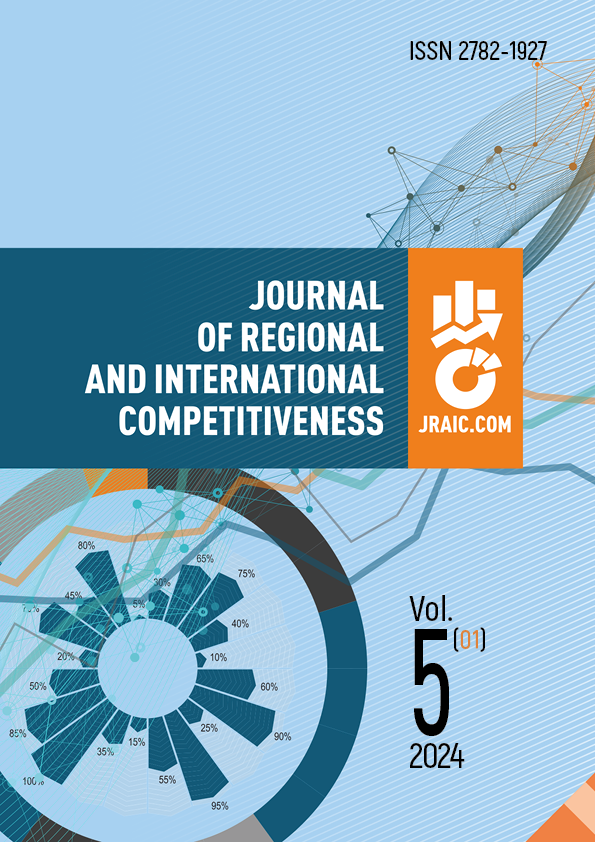from 01.01.2015 until now
Yaroslavl, Yaroslavl, Russian Federation
Yaroslavl, Yaroslavl, Russian Federation
The purpose of the article is to analyse the problem of changing the relationship between non-functional and functional demand. The main task of the presented research is to define the most competitive model (based on functional or non-functional demand) of consumer behaviour in the conditions of the economy of the 20s of the XXI century. To solve this problem, we studied the structure of consumer demand: functional and non-functional ones. We identified the features of non-functional demand, and considered the reasons for its expansion in modern society. Moreover, paper highlights fixing changes in consumer orientations, which resulted in the search for satisfaction not only of material needs, but also aesthetic, emotional, and social ones. It allowed us to formulate a conclusion on the existence of objective reasons for the spread of non-functional demand. Within the framework of non-functional demand, we perform an analysis of origin and expansion of the downshifting phenomenon through the transformation of the basis of functional demand. The authors believe that qualitative changes in global socio-economic development have revolutionized the theoretical concepts of rationality, which are the basis of the functional demand model. Nevertheless, authors criticise the interpretation of downshifting as a model of irrational consumer behaviour, and put forward a hypothesis on the legitimacy of this new phenomenon to be analysed within the framework of functional demand. The authors consider the assumption of the possibility of changing the objectives of society to be a condition for the realization of this hypothesis. it can cause the transformation of «efficiency» concept over the past 300 years. Paper forecasts increasing of non-economic goals rationality, cooperation, mutual benefits, and the coupling of knowledge and technology to moral, cultural, and ethical principles and norms. As a result, in the contrary to the widespread assessment of downshifting as a deviant form of consumer behavior, there was put forward hypothesis considering downshifting as a part of classical consumer choice matrix, taking into account the transformation of this matrix itself.
functional demand; non-functional demand; social demand; speculative demand; irrational and nonrational demand; bandwagon effect; snob effect; Veblen effect; downshifting
1. Marx, K., & Engels, F. (1955). German ideology. Moscow: Politizdat (in Russian).
2. Senior, N. W. (1852). Four Introductory Lectures on Political Economy: Delivered Before the University of Oxford. London: Longman, Brown, Green, and Longmans.
3. Baudrillard, J. (2006). Consumer society. myths and structures of ts. Moscow: Respublika; Kul'turnaya revolyuciya (in Russian).
4. Ilyin, V. I. (2005). Consumer Society: a theoretical model and Russian reality. Mir Rossii, (2), 3–40 (in Russian). EDN: https://elibrary.ru/MQYCSD
5. Kondratiev, K. I. (2005). Modern consumer society and its environmental limitations. Energiya, (10), 60–66 (in Russian).
6. Marshall, A. (1983-1984). Principles of political economy. Moscow: Progress (in Russian).
7. Minko, I. S., & Stepanova, A. A. (2013). Marketing. St. Petersburg: Nauchno-issledovatel'skij institut universiteta ITMO (in Russian).
8. Galperin, V. M., Ignatiev, S. M., & Morgunov, V. I. (1999). Microeconomics. St. Petersburg: Shkola ekonomiki (in Russian).
9. Pshukova, O. A. (2013). Features of consumer choice. Novoe slovo v nauke i praktike: gipotezy i aprobaciya rezul'tatov issledovanij, (8), 163–167 (in Russian).
10. Leibenstein, X. (1993). The effect of joining the majority, the snob effect and the Veblen effect in the theory of consumer demand. St. Petersburg: Shkola ekonomiki (in Russian).
11. Veblen, T. (2011). The theory of the leisure class. Moscow: Librocom (in Russian).
12. Pasikun, V. N., & Mitrofanov, V. A. (2023). Non-functional consumer demand in the modern economy. Ekonomika ustoichivogo razvitiya, 3(55), 158–162 (in Russian).
13. Chemulova, A. V. (2019). Downshifting as a phenomenon of modern society. Nauchnie trudi Kub GTU, (4), 93–102 (in Russian).
14. Kornienko, O. Y. (2014). Historical and sociological analysis of the phenomenon of downshifting as a new movement in the career of a successful person. Vestnik Kemerovskogo gosudartvennogo yniversiteta. Seriya:Politicheskie nauki i sociologiya, 1(57), 92–95 (in Russian).
15. Merzlyakova, V. N. (2008). Alternative models of success in modern culture: downshifting. Vestnik obschestvennogo mneniya, 4(96), 33–42 (in Russian).
16. Solodnikov, V. V. (2011). Professional career of 40-year-old Russians: choosing a profession. Monitoring obshchestvennogo mneniya: ekonomicheskie i social'nye peremeny, 1(101), 129–145 (in Russian). EDN: https://elibrary.ru/NDIEMT
17. Smakotina, N. L., & Semko, S. V. (2012). Protest processes of consumer society in the focus of socio-cultural analysis. Cennosti i smisly, 5(21), 106–119 (in Russian).
18. Rodina, G. A., & Brillante, N. S. (2023). Competitiveness of the “economic man” in the XXI century. Journal of regional and international competitiveness, 4(1), 4–11.
19. Ilyin, V. I. (2015). Downshifting as Upward Social Mobility. Sotsialnoe vremya, (1), 78–90 (in Russian).
20. Goncharova, D. N., & Mukha, V. N. (2021). The subculture of downshifting in modern Russia. Zhurnal sociologicheskih issledovaniy, (2), 70–73 (in Russian).




















